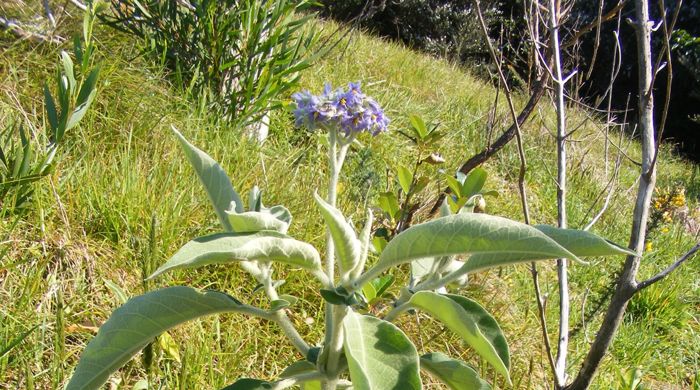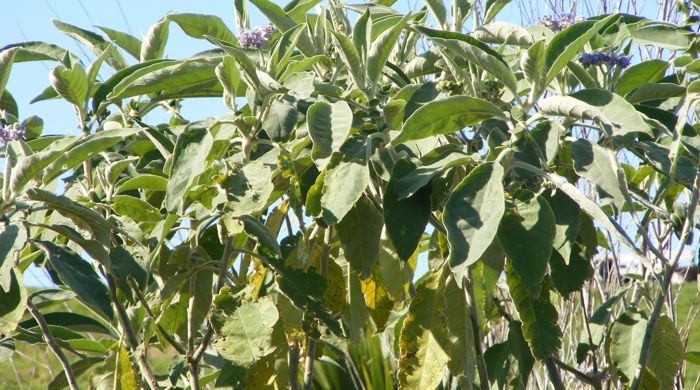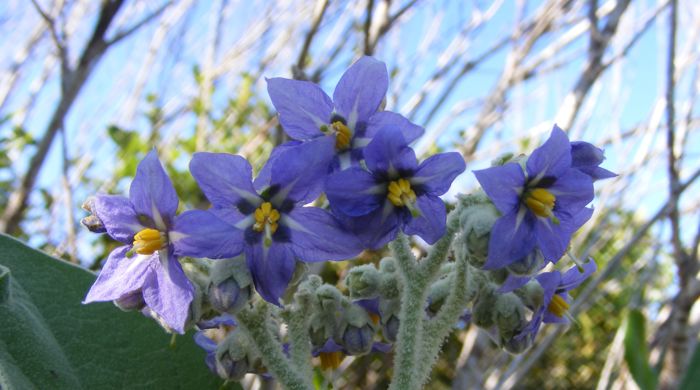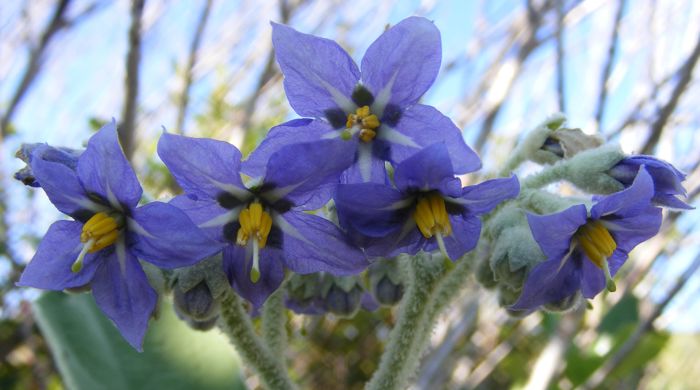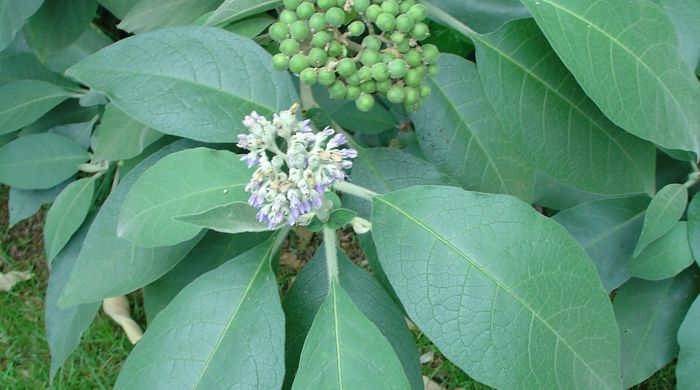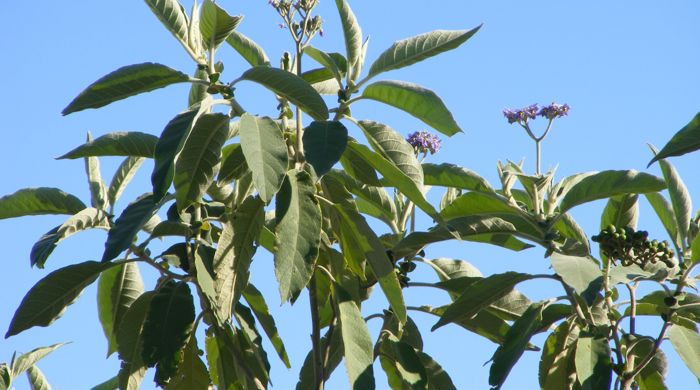Solanum mauritianum
Woolly nightshade
Family: Solanaceae
Origin: South America
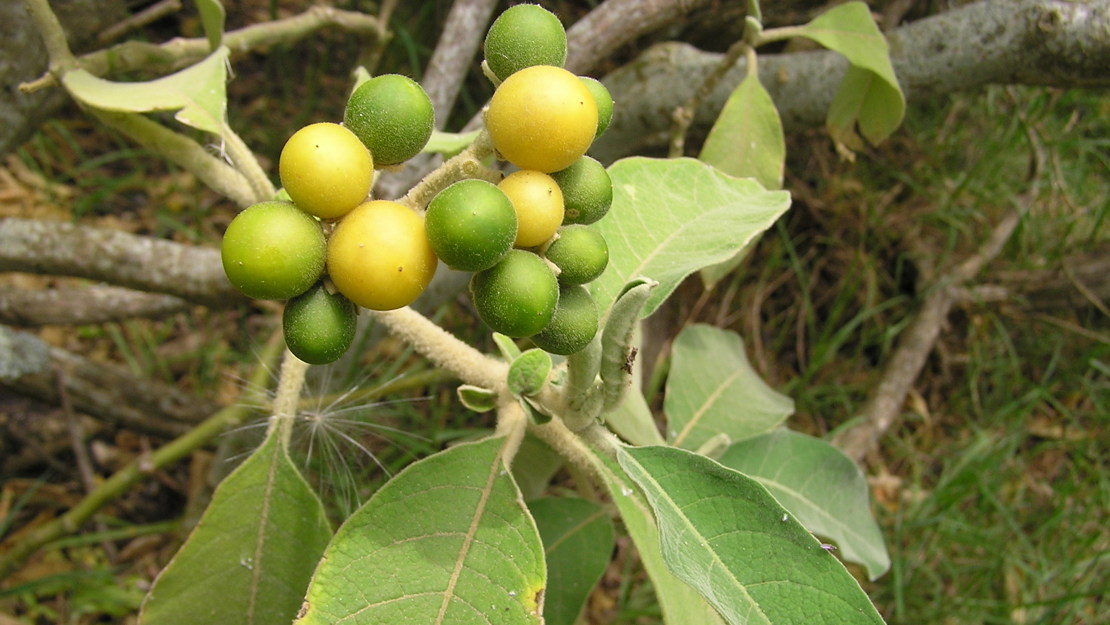
Regional Pest Management Plan (RPMP) status
- Aotea — Eradication
- Waitākere Ranges Heritage Area priority status
- Whole region — Sustained control
- National Pest Plant Accord Species
- Parkland with Significant Ecological Areas — Site-led (on-park and buffer)
General description
Perennial shrub or small tree < 4 m tall. Leaves are grey/green, ovate and densely covered in furry hairs. Flowers are purple and borne in clusters at end of branches. Fruit is a dull yellow berry.
What you need to know
To help protect our environment:
- You must not breed, distribute, release or sell woolly nightshade. As woolly nightshade is a National Pest Plant Accord species, these restrictions apply within the Auckland region and across the whole of New Zealand.
- You must not plant woolly nightshade within the Auckland region, unless you are transferring an existing plant on your land to another location within the boundaries of the same property.
- You must destroy any woolly nightshade on land that you occupy if it has been planted in breach of the above rules and you are directed to do so by an authorised person.
- If you occupy land within the buffer area of a park where woolly nightshade is being managed, you must destroy all woolly nightshade on that land. View a map of park buffers where this applies. To find out more about how we’re protecting Auckland’s parkland from pest plants, visit our pest plant buffer pages.
Auckland Council will control woolly nightshade at all sites within the Aotea/Great Barrier Island group where it is known to occur.
If you see woolly nightshade anywhere on Aotea/Great Barrier Island group, please report it to Auckland Council at pestfree@aucklandcouncil.govt.nz.
Habitats
Disturbed habitat, open scrub or forest, roadsides, riparian and field margins, urban areas.
Dispersal
Seeds dispersed by birds and gravity.
Impact on environment
Forms dense stands, inhibiting native vegetation regeneration. Displaces pasture species and reduces food availability for stock. Contact may cause skin irritation and respiratory problems. The berries are poisonous to humans if eaten, particularly children, but also to cattle and pigs.
Control
Site Management
Avoid using picloram near streams and wetlands. Trees are best controlled standing and allowed to breakdown slowly. Follow up treated areas 3 times per year.
Encourage natural regeneration of native plants or replant treated areas where possible after 2-3 treatments to establish dense ground cover and minimise reinvasion.
Recommended approaches
Do not attempt to undertake control of this species on Aotea/Great Barrier Island group. Please report to Auckland Council if seen on Aotea/Great Barrier Island group.
Physical control
Method: Dig or pull out.
Plant parts requiring disposal: Seeds.
Disposal options: Remove to greenwaste or landfill if practical.
Biocontrol
Check for the presence of agents: Woolly nightshade lace bug (Gargaphia decois).
For more information about how biocontrol works, see What is biocontrol?
Community agrichemical control recommendations
No qualifications: For small stems cut near ground and paste with double strength glyphosate or picloram gel or frill stem and paste fresh cuts with double strength glyphosate gel or picloram gel.
Safety notes
Plant can cause irritation to the throat and skin.
Caution: When using any herbicide or pesticide please read the label thoroughly to ensure that all instructions and safety requirements are followed.
